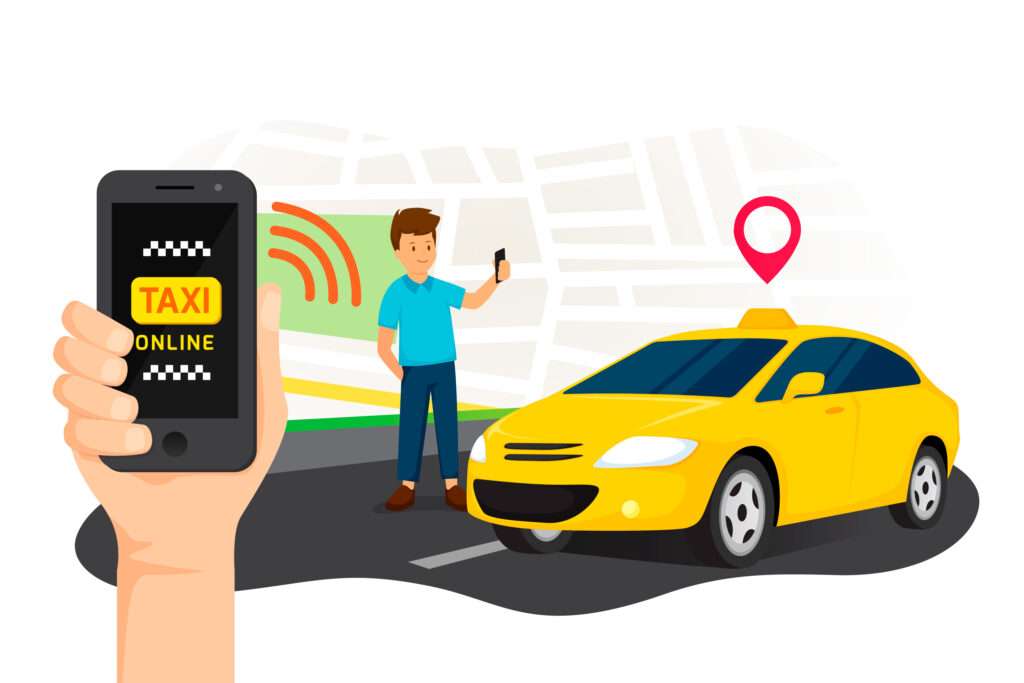The ride-sharing and taxi booking industry has grown exponentially over the last decade. With apps like Uber, Lyft, and others setting a global standard, the competition in taxi app development is fierce. However, this also opens up significant opportunities for businesses that can create innovative and user-friendly apps to capture a share of the market.
In this blog, we’ll explore the essential steps, features, and strategies needed to develop a taxi booking app that stands out and successfully attracts users and drivers.
Why the Taxi App Market Is Growing
The demand for convenient, affordable, and reliable transportation options has skyrocketed. Some factors driving this growth include:
- Urbanization: Increasing city populations need efficient transport solutions.
- Customer Convenience: Taxi apps offer real-time booking, tracking, and multiple payment options.
- Sustainability: Ride-sharing reduces traffic congestion and environmental impact.
Given these factors, developing a standout taxi app can help businesses meet these demands while competing effectively in the market.
Key Steps to Creating a Taxi Booking App
1. Understand the Market and Your Audience
Before diving into development, research your target market thoroughly. Identify:
- Your primary audience (commuters, tourists, corporate clients, etc.).
- Market gaps or pain points, such as limited ride options or high costs.
- Competitors’ strengths and weaknesses to differentiate your app.
2. Choose the Right Business Model
Your taxi app’s business model will determine its revenue streams. Common models include:
- Commission-Based: Charge drivers a commission per ride.
- Subscription: Offer drivers access to the app for a monthly fee.
- Freemium: Provide basic services for free and charge for premium features like ride scheduling.
Selecting the right model ensures your app remains financially sustainable.
3. Define Essential Features
Your app should cater to passengers, drivers, and administrators while offering unique features that enhance usability.
Passenger Features:
- Real-Time Booking and Tracking: Allow users to book rides and track their driver’s location.
- Multiple Payment Methods: Include credit/debit cards, mobile wallets, and cash.
- Fare Estimation: Provide upfront pricing to avoid surprises.
- Ride Scheduling: Enable users to book rides in advance.
Driver Features:
- Driver Dashboard: Help drivers manage trips, earnings, and availability.
- Navigation Assistance: Use GPS for optimized routes and reduced travel time.
- In-App Communication: Facilitate smooth communication with passengers.
- Performance Tracking: Display ratings and feedback to improve services.
Admin Features:
- Comprehensive Dashboard: Monitor and manage operations, drivers, and users.
- Analytics and Reports: Gain insights into app performance and customer behavior.
- Driver Verification: Ensure safety through robust driver onboarding and background checks.
How to Make Your Taxi App Stand Out
1. Focus on User Experience (UX)
A seamless user experience is critical for app success. Ensure your app:
- Loads quickly and operates smoothly across devices.
- Has a clean, intuitive interface that simplifies navigation.
- Includes helpful features like one-click booking and live customer support.
2. Offer Unique Features
Differentiating your app requires innovative features, such as:
- Ride-Pooling Options: Let users share rides to save costs.
- Eco-Friendly Rides: Integrate electric or hybrid vehicle options for environmentally conscious users.
- Dynamic Pricing: Adjust fares based on demand, traffic, and availability.
- Loyalty Programs: Reward frequent riders with discounts and perks.
3. Ensure Robust Security
Security is a top priority for taxi apps. To build trust with users and drivers:
- Encrypt personal and financial data.
- Enable two-factor authentication for added security.
- Use GPS tracking and emergency SOS buttons for passenger safety.
4. Prioritize Scalability
A successful app will attract a growing number of users, so scalability is essential. Use a cloud-based architecture to handle increased traffic and avoid downtime during peak usage.
Development Process for a Taxi Booking App
1. Design and Prototyping
Start with wireframes and prototypes to visualize the app’s layout, features, and navigation. This step ensures alignment between your vision and the development process.
2. Front-End and Back-End Development
- Front-End: Focus on creating a user-friendly interface for passengers and drivers.
- Back-End: Build a robust server-side system to manage bookings, payments, and data storage.
3. Testing and Quality Assurance
Before launching, test your app for bugs, crashes, and performance issues. Conduct user testing to ensure the app meets customer expectations.
4. Launch and Marketing
Deploy your app on platforms like Google Play and the App Store. Use digital marketing strategies such as SEO, social media campaigns, and partnerships to promote your app.
Common Challenges in Taxi App Development
1. Intense Competition
Standing out in a saturated market requires constant innovation and superior service.
2. Regulatory Compliance
Ride-sharing businesses often face regulatory hurdles related to driver licensing, insurance, and safety standards.
3. High Development Costs
Building a robust taxi app requires significant investment in design, development, and maintenance.
4. Customer Retention
Retaining users demands exceptional service quality, competitive pricing, and regular updates.
Future Trends in Taxi App Development
Staying ahead of industry trends ensures your app remains competitive. Some emerging trends include:
- AI and Machine Learning: Improve route optimization, customer support, and pricing strategies.
- Electric and Autonomous Vehicles: Integrate eco-friendly and self-driving car options.
- Voice Recognition: Enable voice-activated bookings for added convenience.
- Augmented Reality (AR): Use AR for better navigation and driver instructions.
Conclusion
Creating a standout taxi booking app requires a combination of innovative features, seamless user experience, and reliable technology. By focusing on customer needs, leveraging advanced technologies, and partnering with an experienced taxi app development company, you can build an app that captures market attention and drives business growth.
In an industry ripe with opportunities, now is the perfect time to invest in a taxi app that not only meets today’s standards but also sets trends for the future. Let your app pave the way for smarter, safer, and more efficient transportation solutions.


